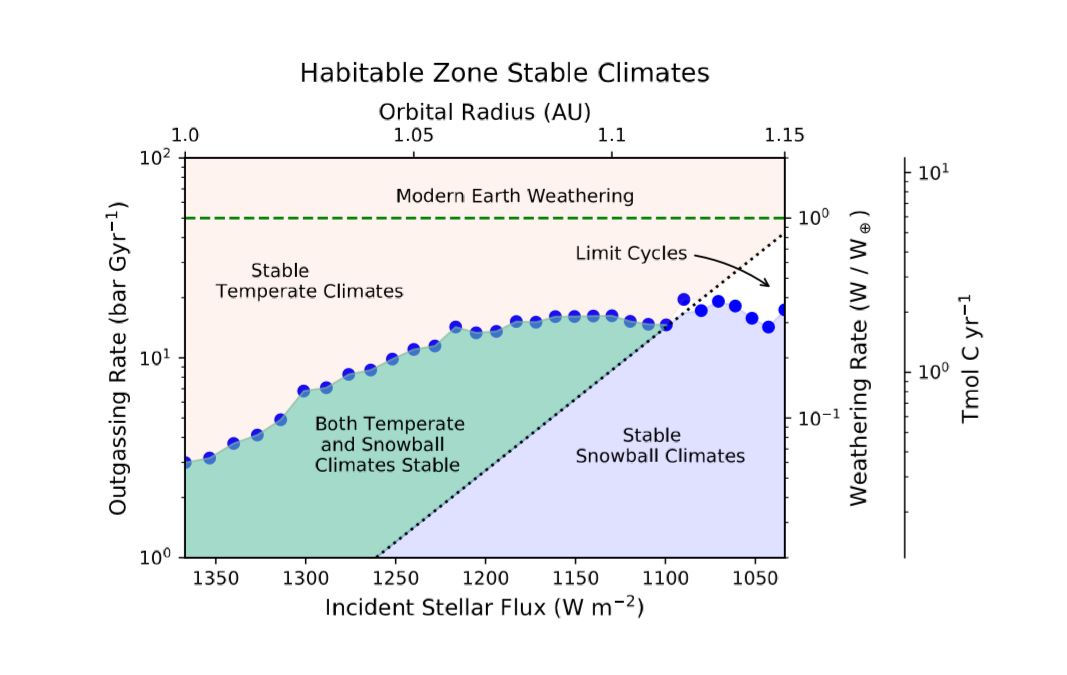29 July 2019
Study suggests frozen Earthlike planets could support life
Posted by larryohanlon
By Abigail Eisenstadt
WASHINGTON – Icy planets once thought too cold to support life might have livable land areas above freezing, challenging the typical assumption of what kinds of planets might be habitable, a new study suggests.
Scientists have long thought snowball planets – Earthlike planets with oceans frozen to the equator – were hostile to life because of the extreme cold. But new research in AGU’s Journal of Geophysical Research: Planets finds some snowball planets might have areas of land near their equators that reach livable temperatures.
“You have these planets that traditionally you might consider not habitable and this suggests that maybe they can be,” said Adiv Paradise, an astronomer and physicist at the University of Toronto and lead author of the new study.
The habitable zone is a range of distances from a star where a planet could theoretically have liquid water and temperatures warm enough to support life. Planets in the habitable zone can be warm and temperate like Earth, or entirely frozen, like snowball planets.

An artist’s rendition of what a snowball planet might look like. Ice covers the oceans to the equators. Credit: NASA
Geologists suspect Earth has gone through anywhere from one to three snowball phases in the past and that marine microorganisms likely survived through at least one of those periods.
“We know that Earth was habitable through its own snowball episodes, because life emerged before our snowball episodes and life remained long past it,” Paradise said. “But all of our life was in our oceans at that time. There’s nothing about the land.”
In the new study, Paradise and his colleagues wanted to know if areas of land on snowball planets could reach life-sustaining temperatures. They used a computer program to simulate different climate variables on theoretical snowball planets, adjusting conditions like the amount of sunlight and configuration of the continents.
One variable they were interested in was carbon dioxide. Carbon dioxide traps heat and keeps a planet in a temperate climate range; without it, planets cool and oceans freeze.
Planets become snowballs when their atmospheric carbon dioxide levels drop too low from a combination of rainfall and erosion. Water absorbs carbon dioxide and turns it into carbonic acid, which reacts with rocks on the ground during erosion. This interaction breaks carbonic acid down more. It binds with minerals, which are then carried to the oceans and eventually stored into the seafloor.

This graph shows the relationship between carbon dioxide produced by volcanic activity and carbon dioxide removed from rainfall and erosion for temperate and snowball climates. Planets become stuck in a snowball state when volcanic activity and weathering rates balance each other out. Credit: AGU
Scientists previously thought carbon dioxide removal from a planet’s atmosphere stopped during snowball phases because all of its surface water was frozen. But surprisingly, the new study found some snowball planets continue to lose carbon dioxide even after they’ve frozen. This means the planets would have to have some non-frozen ground and occasional rainfall for water to continue to remove carbon dioxide from the atmosphere.
Some of the warmer snowball planets the study’s authors simulated had land areas warm enough to hold liquid water and life even when their oceans were frozen to their equators. They found land areas in the center of the continents away from the frozen oceans could reach temperatures above 10 degrees Celsius (50 degrees Fahrenheit). This is much warmer than the lowest temperature at which life can reproduce, which scientists estimate to be minus 20 degrees Celsius (minus 4 degrees Fahrenheit).
The results also suggest Earthlike planets can become stuck in a snowball state under certain conditions. Scientists used to think planets exited snowball phases through a gradual buildup of carbon dioxide released by volcanoes. But weathering could draw out enough carbon dioxide out of the atmosphere to balance volcanic output, creating a negative feedback loop where the planet never thaws, according to the researchers.
The findings suggest the boundary between what is a habitable planet and what is not may not be as definite as geologists once thought, according to the researchers.
“What we find is actually that line is a bit fuzzy,” Paradise said.
Abigail Eisenstadt is a science writing intern at AGU. Follow her on twitter @aeisenstadt1










 GeoSpace is a blog on Earth and space science, managed by AGU’s Public Information staff. The blog features posts by AGU writers and guest contributors on all sorts of relevant science topics, but with a focus on new research and geo and space sciences-related stories that are currently in the news.
GeoSpace is a blog on Earth and space science, managed by AGU’s Public Information staff. The blog features posts by AGU writers and guest contributors on all sorts of relevant science topics, but with a focus on new research and geo and space sciences-related stories that are currently in the news.
Very well written! Thank you for this wonderful piece.
HOTH